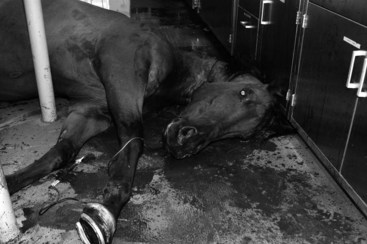Hemorrhage
Basic Information 
Clinical Presentation
History, Chief Complaint
Etiology and Pathophysiology
• Traumatic vascular disruption occurs because of an injury that mechanically opens a vessel or vessels (caused by injury, disease, infection, or neoplasia) with a normal coagulation system that is unable or slow to repair the defect because of vessel size and blood pressure, repeated trauma, or systemic inflammation.
• Hemostatic bleeding disorders may occur by one of two pathways:
 Primary hemostatic defects involve either a genetic failure of the platelets to functionally occlude a vascular leak or thrombocytopenia, which reduces effective platelet numbers. Both result in capillary and small vessel hemorrhage (petechia, ecchymosis).
Primary hemostatic defects involve either a genetic failure of the platelets to functionally occlude a vascular leak or thrombocytopenia, which reduces effective platelet numbers. Both result in capillary and small vessel hemorrhage (petechia, ecchymosis). Secondary hemostatic issues are related to coagulopathies caused by congenital defects, vitamin K deficiencies, hepatic disease, drug toxicity, envenomation, poisons, or consumption of coagulation factors (ie, disseminated intravascular coagulation). This results in overt hemorrhage into body cavities or externally.
Secondary hemostatic issues are related to coagulopathies caused by congenital defects, vitamin K deficiencies, hepatic disease, drug toxicity, envenomation, poisons, or consumption of coagulation factors (ie, disseminated intravascular coagulation). This results in overt hemorrhage into body cavities or externally.












